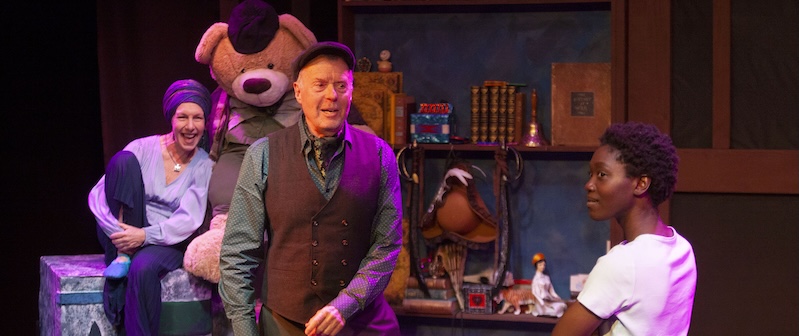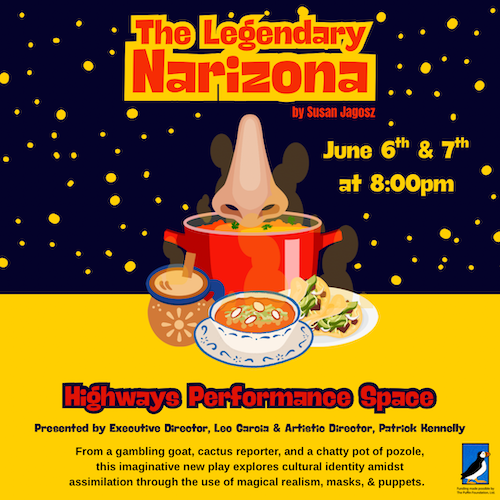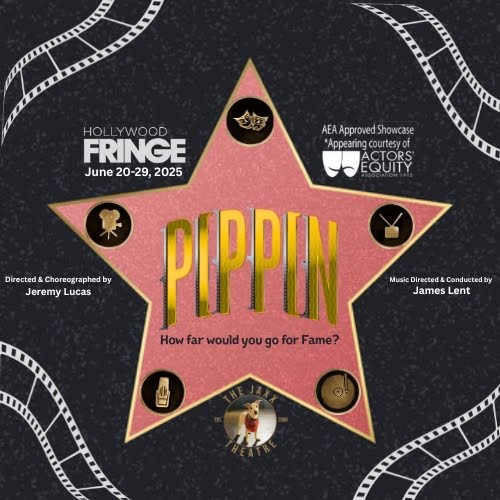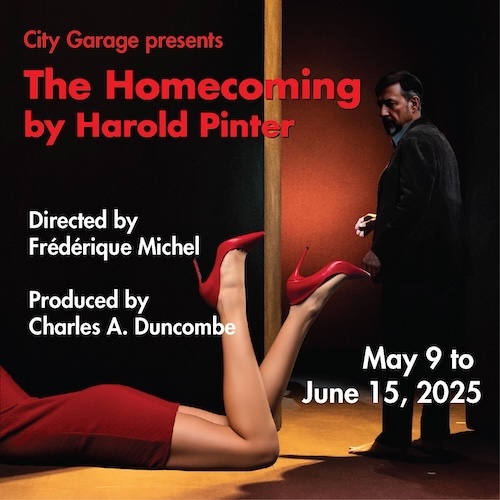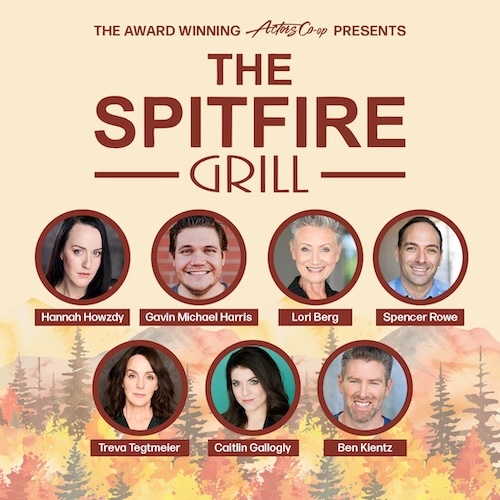
Lisa Robins, Kelly Franett, and Raven Scott (photo by Steven Feldschündneff)Reviewed by Asa Fris
Ophelia’s Jump
Thru March 16Helvetica by Katie Coleman tells the fictional life story of children’s book author, Helvetica Burke, and entertains in story-book-like fashion.
Coleman has composed the play with scenes ranging from Helvetica’s childhood through shortly before her death, capturing romance, loss of loved ones, and impending mortality. To accomplish telling this all-encompassing story, Coleman creates three separate Helvetica’s: Past (Raven Scott), Present, (Mikki Hernandez), and Future, (Lisa Robbins), who all turn to storytelling for hope, connection, and healing.
The selection and ordering of scenes proves to be more confusing than engaging. Instead of one scene unlocking our ability to experience another, scenes seem haphazardly organized, arbitrarily moving from one short vignette-like scene to the next. The dialogue sometimes comes off as Coleman’s own philosophical musings on death or life, and this tends to pull us further away from the characters instead of closer to them.
To tie this expansive tale together, Coleman uses Helvetica’s best friend, Myron (Kelly Franett), a toy stuffed bear come to life, to segue into scenes and expound on missing information. Narration thus becomes the primary experience of Helvetica. This can feel like watching a book, and leaves many empty spaces in the action. Elina de Santos often chooses to fill the space either with actors moving furniture or performing short pantomime-like sequences. These choices don’t always further the story or experience of the play, and leave something to be desired.
The most effective moments of the narration occur when it’s combined with music and choreography, as one story about a mechanical ballerina (also Raven Scott) and her admirer turned exploitative keeper (Peter Mendoza) does effectively. Choreographed by Julio Villegas and wistfully scored by Janette Combs, the sequence captures the poetic power of stories and art in response to pain.
Overall, Elina de Santos’s direction does not elevate the piece. Her use of furniture is inconsistent and confusing at times, and her staging places actors in awkward positions. Many scenes also seem to rush or skim through their potential depth. For example, at the top of the play, Myron tells us the most consequential event of the story is when Helvetica finally fixes a squeaky screen door. But when this moment arrives, it seems to come and go without great significance, and I was left wondering why its importance had been emphasized.
The production still contains a lot of humor and humanity, as for example Myron’s aloof uncle-esque charm, and actor Olga Konstantulakis’ scenes with Helvetica Future. Both as a hospital patient and an animal shelter worker, Konstantulakis’ projects a quiet empathy that supports Coleman’s musings in a direct and touching way.
The design lends itself to a pleasant story book concept. Scenic designer Beatrice Casagrán constructs climbable book shelves on either side of a large screen door to comprise the set. The shelves are intricately decorated and fun to look at, and feature items from Helvetica’s stories and life. The screen door serves as the primary exit and entrance. But the sides of the set are also used as wing entrances, and an uncovered entrance stage right and a narrow entrance stage left are both quite distracting. The lighting design by Vickie J. Scott is effective, and the costume design by Kale Hinthron provides an aesthetic that might remind you of children’s books like Cloudy With A Chance of Meatballs, or Amelia Bedelia.
While Coleman’s narrative is unfocused and de Santos’s direction brings to it little clarity, Helvetica nonetheless poses questions worth considering: What stories do we need to live with inspiration or purpose? How can we find serenity after a loved one’s death? And, what do we do to find comfort in the face of our own mortality? Such reflections are certainly worthwhile.
Ophelia’s Jump, 2009 Porterfield Way, Upland. Fri.-Sat., 8 pm, Sat., 3:30 pm, Sun., 4 pm; thru March 16. opheliasjump.org Running time: approximately 90 minutes with no intermission.


